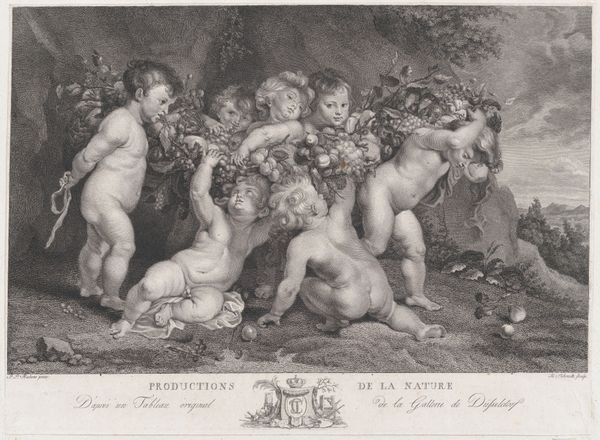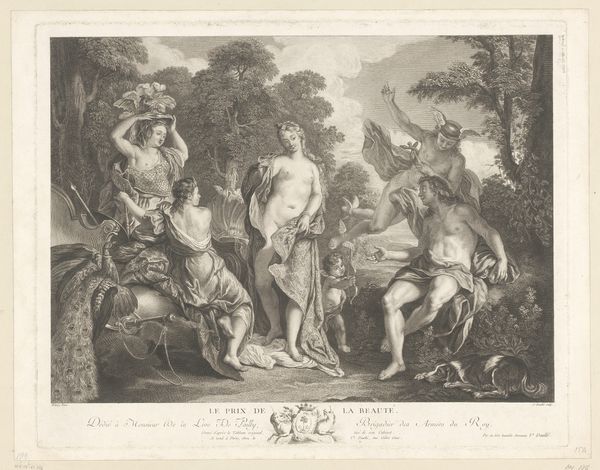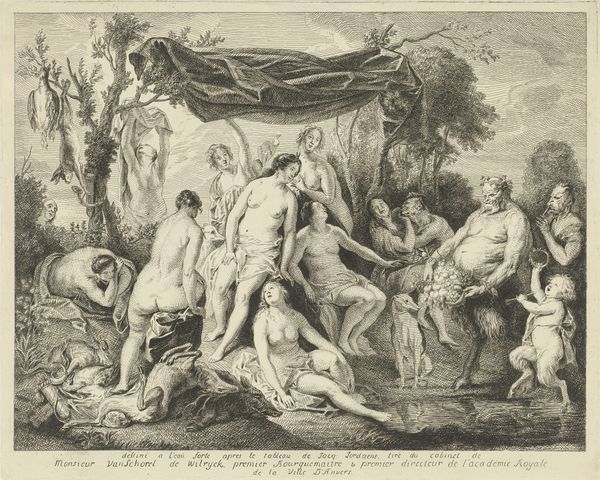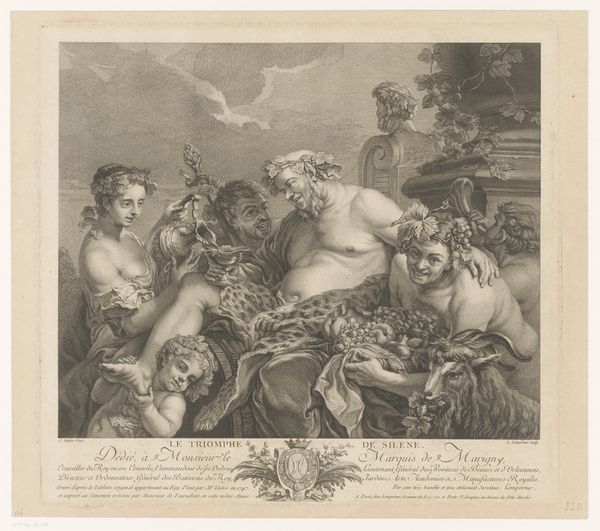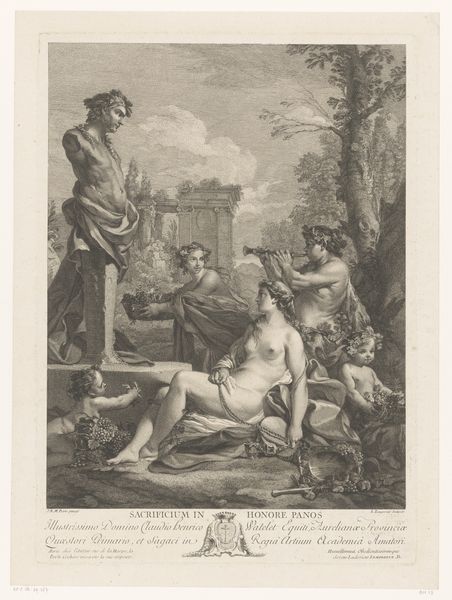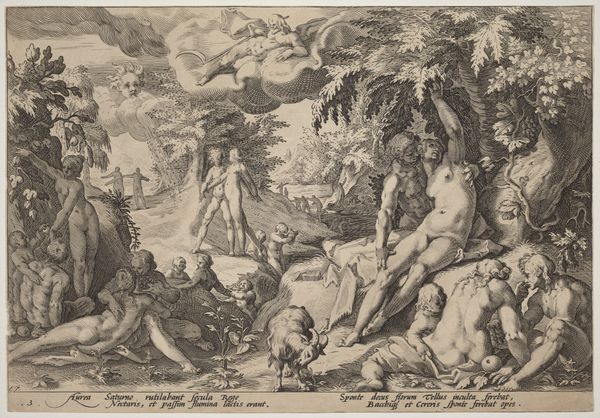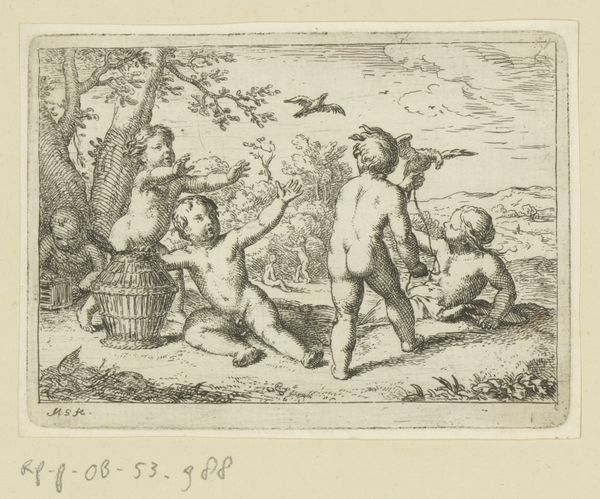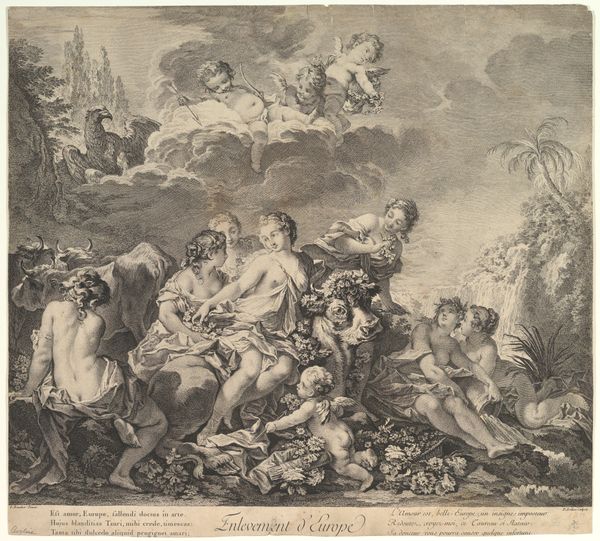
Dimensions: Sheet (Trimmed): 15 15/16 × 18 1/4 in. (40.5 × 46.3 cm)
Copyright: Public Domain
Editor: This is "The Triumph of Silenus," an engraving by Nicolas de Launay from 1775-1778, currently at the Metropolitan Museum of Art. The chaotic composition and exaggerated figures give it an almost unsettling feeling. What do you see in this piece? Curator: I see a potent commentary on power, pleasure, and the dynamics of social order. Silenus, the drunken tutor of Dionysus, is usually depicted as a figure of wisdom, albeit an unconventional one. Here, his inebriation and dependence on others exposes a vulnerability that invites questions about who holds power and how it’s maintained. Consider the figures surrounding him. How does their presence either support or exploit his condition? Are we meant to judge or empathize? Editor: That's interesting! I was so focused on the debauchery of the scene. I didn’t really consider the power dynamics at play. Curator: Exactly. It's crucial to explore whose narratives are being centered and marginalized within this "triumph." Think about the visual cues of the era, particularly the male gaze prevalent in art history, and how that lens might affect our understanding. Editor: So, it’s not just a scene of drunken revelry, but maybe a reflection of the social imbalances of the time? Curator: Precisely. We can explore ideas around privilege and consider this image as a reflection of the elites, of those people who are ‘carried’ in society. Does this perspective alter how you see the engraving? Editor: Absolutely. I see the engraving now less as a celebration and more as a critical observation of society's hierarchies. Curator: And that shift in perspective is what makes art history so relevant to our understanding of the present. Editor: Thanks, I have something to think about now!
Comments
No comments
Be the first to comment and join the conversation on the ultimate creative platform.


